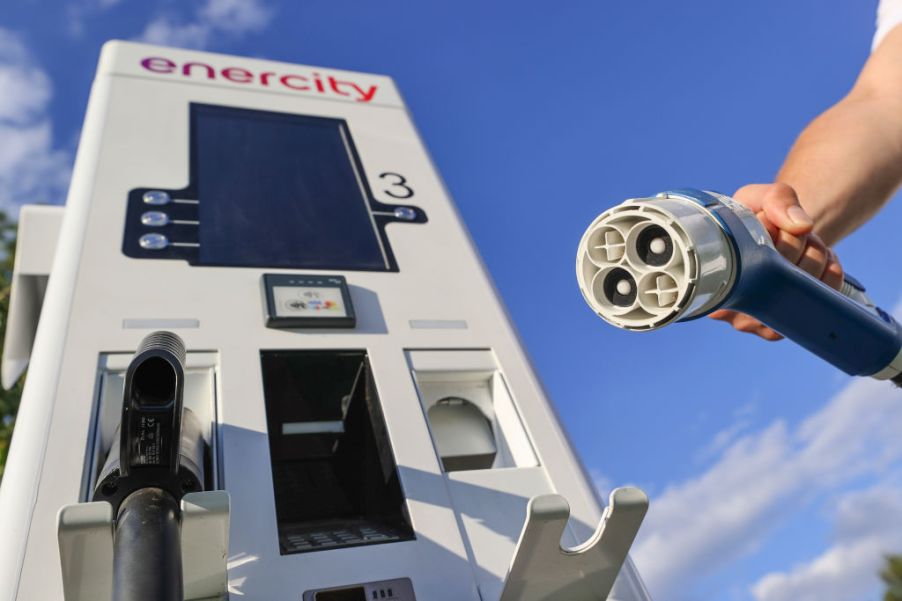
EVs Use More Carbon Than Gas Powered Cars to Make: Are They Really Cleaner?
Everyone assumes electric vehicles are cleaner than gas-powered equivalents, and they are. But not right away, and sometimes not within the first 50,000 miles of use. Depending on where the source of your electricity comes from it can take years and years for an electric car to match the carbon footprint of a gas-powered car. Here’s why.
How are carbon emissions determined?

A company has put together a model for calculating carbon emissions for vehicles. It takes in from the materials used to make it all the way to its demise. It even calculates the number of various materials in the car and the carbon footprint to manufacture each of them.
It’s called Argonne’s Greenhouse Gases, Regulated Emissions and Energy Use in Technology or GREET model. Argonne National Laboratory in Chicago devised the metrics of the model. Now even the EPA and California Air Resources Board are nursing it to determine policies around EVs.
Electric vehicles generate more carbon than internal combustion vehicles. It is mostly because of the mining process for certain minerals in batteries. Based on that the GREET model can determine the break-even point where an EV becomes environmentally better than an ICE vehicle.
Numerous factors are crunched to determine a vehicle’s carbon footprint

Factors dictating that break-even point include the size of the EV’s battery, the fuel economy of the ICE vehicle, and how the electricity used to charge the EV is made. Here’s how you typically determine the numbers hypothetically based on a Tesla Model 3 and Toyota Corolla.
First, if they are driven in the US then 23 percent of electricity comes from coal-fired plants, which are extremely dirty. Then the size of the battery, in this case, a 54 kWh battery and cathode made with nickel, cobalt, and aluminum. The Corolla weighs just under 3,000 lbs with 33 mpg. Each car’s demise was determined to be 173,151 miles of use.
Under those circumstances, the Tesla sedan won’t start becoming environmentally better than the Corolla for 13,500 miles. At that milestone, it becomes less harmful to the environment. But if that Tesla is driven in Norway, the break-even number is 8,400 miles. That’s because Norway generates almost all of its electricity from renewable hydropower.
Different countries where a vehicle is used yield different numbers

If the same two cars are from China or Poland, the number goes up to 78,700 miles before break even. That is based on the numbers as determined by Reuters. In general, a new mid-size EV sedan generates 8.1 million grams of carbon dioxide to produce. So, that’s before it travels its first mile.
A similar ICE sedan generates more than 5.5 million grams of carbon before it gets driven its first mile. But EVs emit much less carbon one the driving starts, related to gasoline production and consumption of the ICE vehicle. Even if electricity comes from a coal-fired electric plant the EV would produce 4.1 million grams of carbon a year. The ICE sedan would create 4.6 million grams.
Taking this model to the people, you can estimate your car’s emissions online. The particulars of what car, area, and the mileage you drive can give a ballpark number for what makes your car more or less environmentally friendly. But as elaborate and far-reaching as the GREET model is, there are those groups who deny its numbers.
The American Petroleum Institute, as you can imagine, disputes the advantages of EVs. “Multiple studies show that, on a life-cycle basis, different automobile powertrains result in similar greenhouse gas emissions,” the API posits on its website. So the debate, in some circles, continues. However, the manufacturers and our government have answered the question with their EV plans for the next decades



